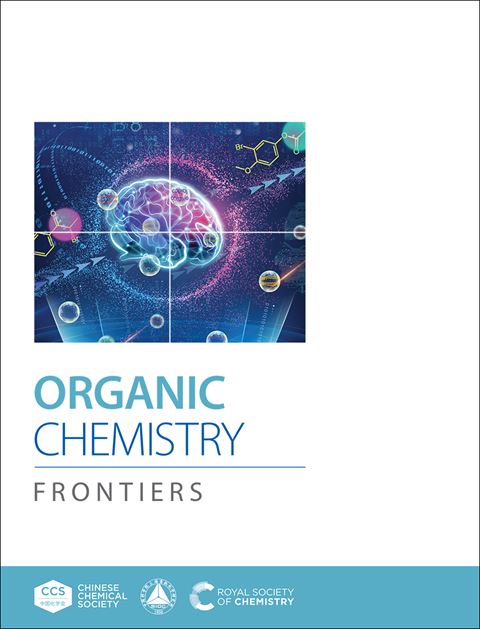Structurally Divergent Reactivity of 2,2-Disubstituted Azetidines – Mechanistic Insights and Stereochemical Implications of Amide Coupling and Ring Expansion to 5,6-dihydro-4H-1,3-oxazines
IF 4.7
1区 化学
Q1 CHEMISTRY, ORGANIC
引用次数: 0
Abstract
Azetidines have gained traction in drug discovery for their ability to introduce conformational constraint and modulate physiochemical properties. Strategies that enables their selective functionalization or controlled expansion into more complex scaffolds provide opportunities for molecular diversification/new chemical space. Subjecting 2,2-disubstituted azetidines to amide coupling with carboxylic acids is found to effect either N-acylation or ring expansion to spiro and 6,6,-disubstituted 5,6-dihydro-4H-1,3-oxazine, dependent on reaction conditions. A diverse range of topologically interesting heterocycles, which hold significant potential for pharmaceutical screening, have been prepared using this divergent reaction manifold. A mechanistic framework, supported by additive screening and trapping experiments, is presented to account for the ring expansion and racemization that accompanies these transformations when the substrate allows formation of a ring-opened azafulvenium intermediate2,2-二取代氮杂啶的结构发散性——酰胺偶联和扩环对5,6-二氢- 4h -1,3-恶嗪的机理和立体化学意义
氮杂啶因其引入构象约束和调节物理化学性质的能力而在药物发现中获得了吸引力。使其选择性功能化或控制扩展成更复杂支架的策略为分子多样化/新的化学空间提供了机会。研究发现,将2,2-二取代氮杂啶与羧酸进行酰胺偶联,根据反应条件的不同,会对螺旋和6,6 -二取代5,6-二氢- 4h -1,3-恶嗪产生n -酰化或扩环作用。利用这种发散反应歧管制备了各种各样的拓扑上有趣的杂环,这些杂环具有很大的药物筛选潜力。在添加剂筛选和捕获实验的支持下,提出了一个机制框架,以解释当底物允许形成开环的azafulvenium中间体时,伴随这些转化的环扩展和外消旋化
本文章由计算机程序翻译,如有差异,请以英文原文为准。
求助全文
约1分钟内获得全文
求助全文
来源期刊

Organic Chemistry Frontiers
CHEMISTRY, ORGANIC-
CiteScore
7.90
自引率
11.10%
发文量
686
审稿时长
1 months
期刊介绍:
Organic Chemistry Frontiers is an esteemed journal that publishes high-quality research across the field of organic chemistry. It places a significant emphasis on studies that contribute substantially to the field by introducing new or significantly improved protocols and methodologies. The journal covers a wide array of topics which include, but are not limited to, organic synthesis, the development of synthetic methodologies, catalysis, natural products, functional organic materials, supramolecular and macromolecular chemistry, as well as physical and computational organic chemistry.
 求助内容:
求助内容: 应助结果提醒方式:
应助结果提醒方式:


